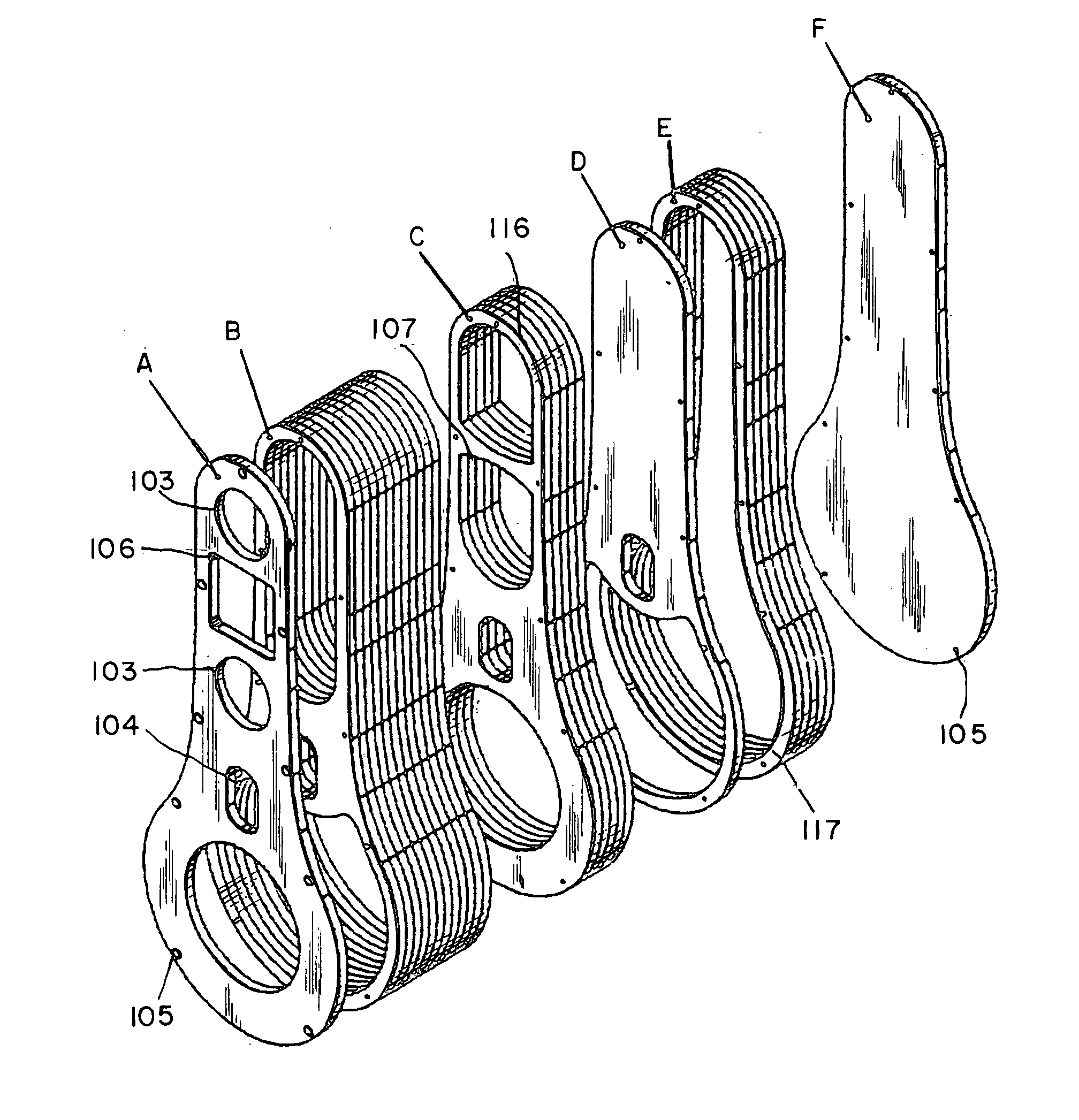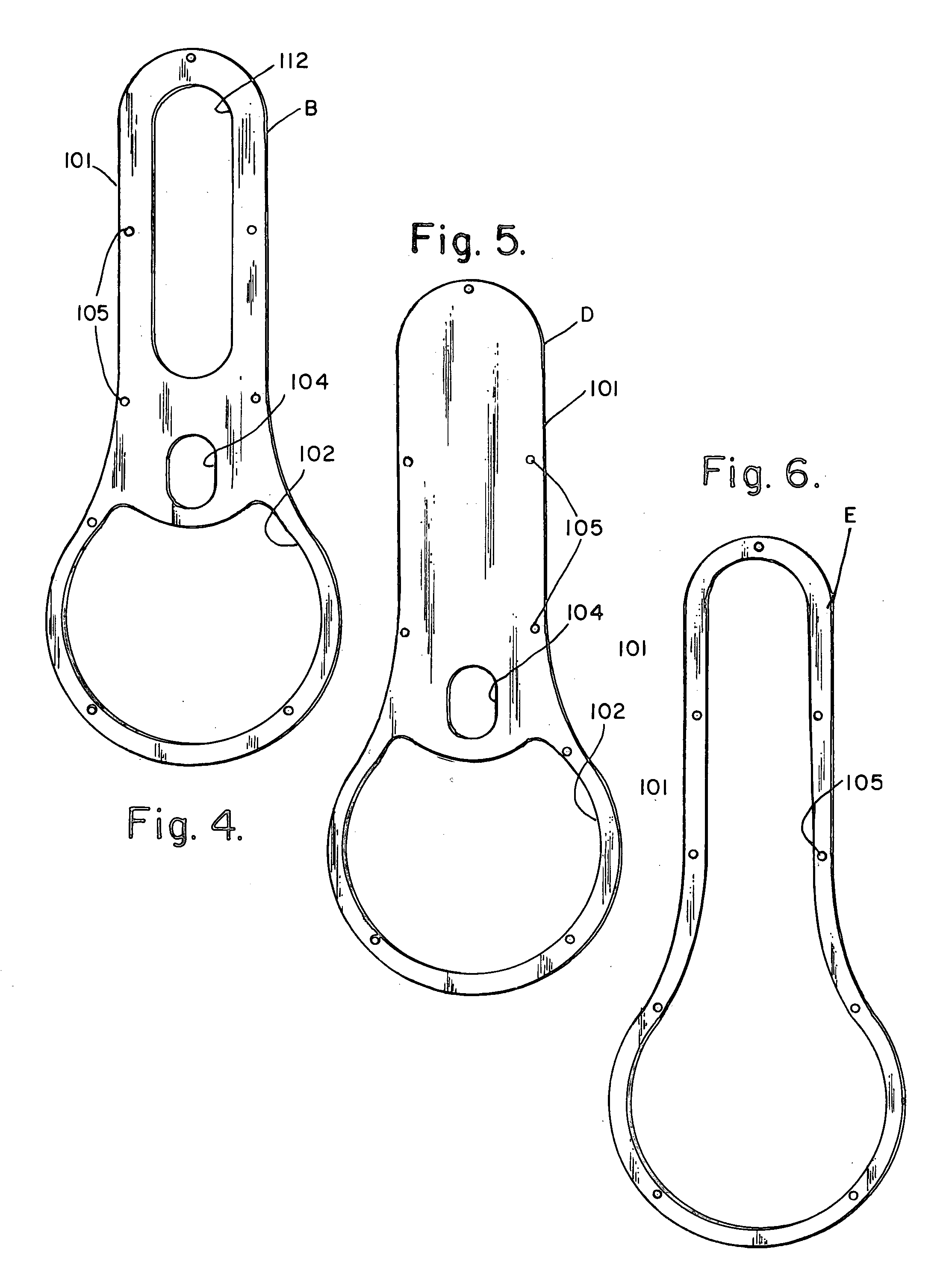Process for fabricating of a speaker enclosure having any preselected external, shape containing internal cavities shaped with preselected enhancements for each preselected driver mounted within said external shaped enclosure
a technology of pre-selected enhancements and enclosures, which is applied in the direction of packaging, labelling, transportation and packaging, etc., can solve the problems of distortion of the sound reproduction capability of the device, assembly of the device, and no prior art improvement teaching suggests substantially changing the outside shape of the box
- Summary
- Abstract
- Description
- Claims
- Application Information
AI Technical Summary
Benefits of technology
Problems solved by technology
Method used
Image
Examples
Embodiment Construction
[0042] Referring now to the drawing, FIG. 1 shows the general circumferential shape 101 preselected to be the external shape of the enclosure fabricated according to the teaching of this invention. A preselected number of guide holes 105 are marked on this general template.
[0043]FIG. 2 shows the general template with internal circumferential shapes for a woofer cutout edge 102, mid-range cutouts edges 103, a port cutout edge 104 and a tweeter cutout edge 106 for the preselected set of drivers to be mounted within the assembled enclosure. The guide holes 105 set out on the general template of FIG. 1 are applied to the template of FIG. 2 to assist in alignment of the templates into the final assembled enclosure.
[0044]FIG. 3 shows the general template with guide holes 105 and an internal support 107 placed between chambers formed by internal circumferential edges 116 so as to not interfere with the mounting of the mid-range and tweeter drivers within the chamber formed by internal ci...
PUM
| Property | Measurement | Unit |
|---|---|---|
| angle | aaaaa | aaaaa |
| angle | aaaaa | aaaaa |
| angle | aaaaa | aaaaa |
Abstract
Description
Claims
Application Information
 Login to View More
Login to View More - R&D
- Intellectual Property
- Life Sciences
- Materials
- Tech Scout
- Unparalleled Data Quality
- Higher Quality Content
- 60% Fewer Hallucinations
Browse by: Latest US Patents, China's latest patents, Technical Efficacy Thesaurus, Application Domain, Technology Topic, Popular Technical Reports.
© 2025 PatSnap. All rights reserved.Legal|Privacy policy|Modern Slavery Act Transparency Statement|Sitemap|About US| Contact US: help@patsnap.com



